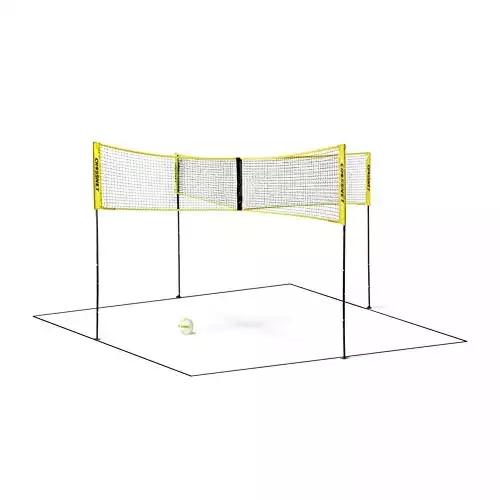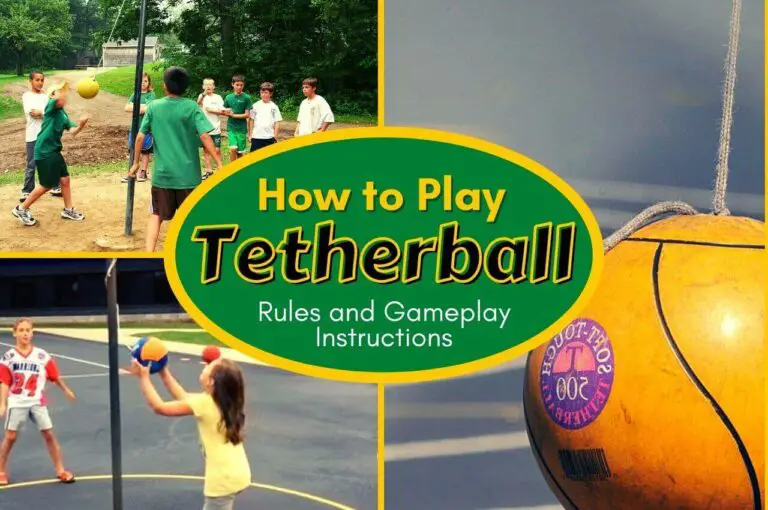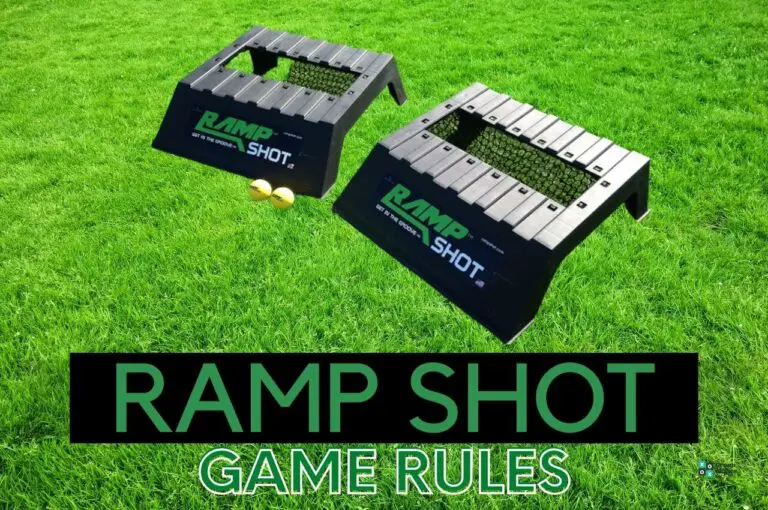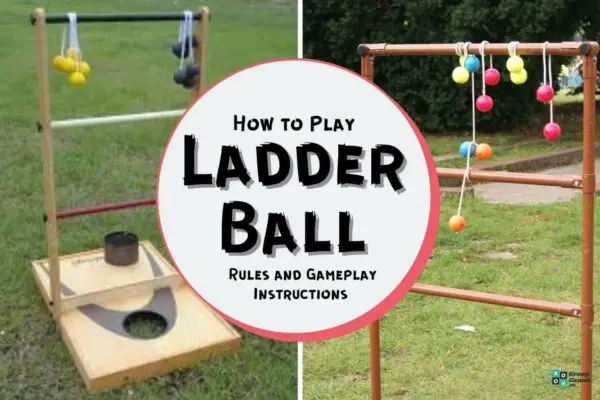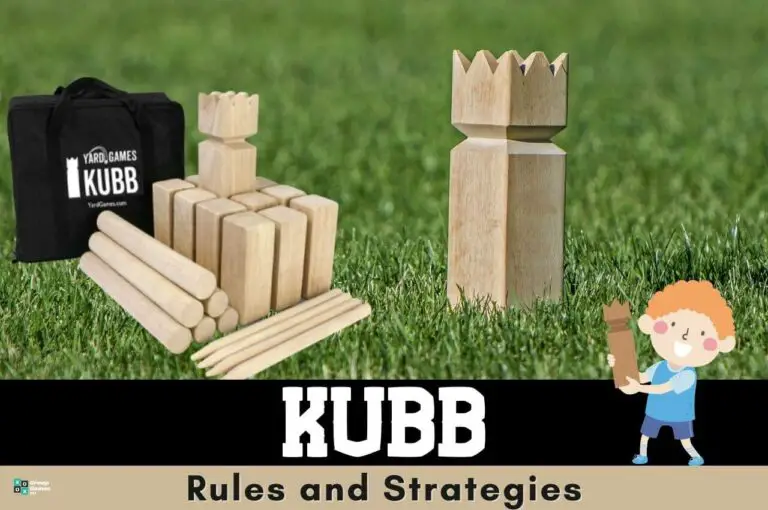Part Four Square, part volleyball, Crossnet’s rules make it one of the more unique beach games you’re likely to play this summer.
The game takes all the best bits of volleyball (the fast-paced nature and competitiveness) and combines them with the layout and gameplay of Four Square, with players ducking it out to eliminate one another and reach the fourth-square.
Once there, players aim to be the first to score eleven points, all while avoiding being eliminated themselves.
In today’s guide, we’ll show you how to play Crossnet, explaining the rules, detailing the equipment you’ll need, and outlining exactly how to score those all-important points.
What is Crossnet?
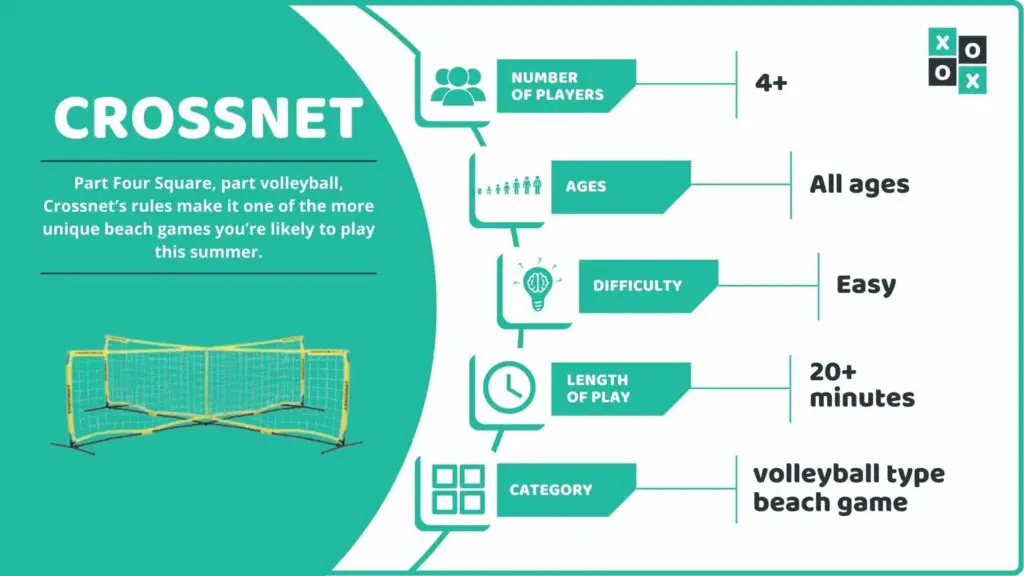
Described as the world’s first four-way volleyball game, Crossnet has only been around since 2017, but has already proven a hit in the United States, being played on beaches, in public parks, and at outdoor gatherings up and down the country.
A fun alternative to outdoor games like fricket or water balloon toss that’s just as suitable for entertaining the kids as it is for more grown-up gatherings, Crossnet is a game unlike any you’ve ever played, yet contains enough familiar elements to make it very easy to master.
Number of Players Required: 4+. A minimum of 4 players is required to start the game, though having more players ready to join in once an active player is eliminated keeps up the fun.
Who Can Play It: All ages. As the net will need to be set at an appropriate height, similar-aged groups will get more out of Crossnet by playing together.
Difficulty: Easy.
Main Objective: Eliminate the other three players as you battle to take the fourth square and score 11 points.
Why We Love It: The energetic gameplay and innovative setup make it a fast and furiously fun beach game. What’s more, the elimination format really appeals to our competitive side, making this a great option for those who like the knock-out format of other games such as Killer Darts.
Playing Crossnet: What You’ll Need
Crossnet is such a distinctive game that you really need to buy a complete Crossnet kit in order to play properly.
Fortunately, these kits contain everything you need to get your game going, including:
- Adjustable Crossnet net
- Crossnet volleyball
- Volleyball pump
- Inner and outer boundary markers
- All necessary poles, fasteners and pegs.
How to Set Up a Game of Crossnet
At first glance, the adjustable, four-square-like net that you’ll use for Crossnet can seem a little complicated, but it typically takes no more than a few minutes to get set up.
Your Crossnet kit will come with all the instructions you need, but just to prove how easy it is, here’s a demonstration from the makers of Crossnet themselves.
The most important thing to consider at this stage is what height you’re going to play at.
Naturally, if you’re breaking this out to keep the kids entertained over the summer, then you can simply adjust it to children’s height, or otherwise, set it up for adults if it’s a grown-ups only affair.
If you’re playing as a family, however, you might have to set the height somewhere in the middle so that mom, dad, and the kids can all make the most of the game.
Numbering the Squares
Once the net is set up, you’ll see that it divides the playing area into four evenly-sized squares. Your next task is to give each square a number between 1 and 4. For example, you might start in the top right-hand corner with 1, move to the top-left with 2, and so on.
Each square is given a point value, with 4 being the highest and 1 being the lowest.
Next, assign each of your four players to a numbered quadrant and get ready to play.
Crossnet Rules and Gameplay

The game begins with the player in Square 4 serving the ball over the net to the player in Square 2.
From there, a normal rally begins much as it would in traditional volleyball, with the player in the second square being free to either send the ball back to the player in the fourth square, or to any of the other two players.
Although the main objective is to rack up 11 points, those points can only be scored from the fourth square. As such, the game begins with the players in squares one to three trying to eliminate the fourth-squared player so that they can move up and occupy that spot.
How Eliminations Work in Crossnet
There are a few ways that a player can be eliminated from the game of Crossnet:
- Failing to successfully return a volley by hitting the ball into the net or out of the designated boundaries
- Failing to successfully return a volley by allowing the ball to hit the floor within their own square
- Hitting the ball out of turn
- Hitting the ball incorrectly (such as with a head, leg, or another body part).
Once a player is eliminated, the other three players move up one space to occupy that spot.
So, for example, if Player 4 was eliminated, Player 3 would move into the fourth square, Player 2 would move into the third square, and Player 1 would move into the second square.
If you were playing with more than four players, the next person waiting in line for a turn would join the first square. Alternatively, if you were playing with just four players, then the person eliminated would simply rejoin the game in the first square.
How to Keep Score in Crossnet
Once a player reaches Square 4, they can start accumulating points. A point is scored any time they get another player out, or any time that other players get each other out.
In other words, any time a player in the first three squares is eliminated, the player in the fourth square scores a point.
The aim is to get to 11 points and win by 2.
Frequently Asked Questions About Crossnet
What Happens to a Player’s Points After They’re Eliminated?
This depends on how you want to play the game. If you’re playing by the official rules, then players keep their points after being eliminated and can add to them once they return to the game and get back to Square 4.
So, if a player scores 5 points and then is knocked out, then when he gets back to Square 4 again, his next point will be his 6th in total.
If there are a lot of players and keeping track of everyone’s score is too tricky, you can play a version in which players lose their points when eliminated and have to start again. The only downside to this is that the game may take longer to finish.
What are the Crossnet Rules for Hitting the Ball?
You’re allowed to strike the ball once per turn, using only your hands. A hand is defined as the entire area from the wrist to the fingertips, including the backs of the hands.
However, official rules state that players must not catch, hold, or carry the ball during play.
Four Square: A Simplified Alternative to Crossnet
You’ve read all about Crossnet, you’ve seen the videos, and you can’t wait to play the game for yourself.
There’ just one problem:
You just don’t have the spare cash to buy a complete Crossnet kit right now. Or maybe you’ve just ordered one, but don’t want to wait for it to get here before you start having fun.
Either way, there is a simpler alternative to the game that requires no net and no special equipment.
It’s called Four Square, and it’s the very game upon which Crossnet was based.
The rules are very much the same in that four players each occupy a square from which they battle to eliminate one another and build up points. The only key differences are that instead of a volleyball-style net, the game uses a large square marked on the ground (with tape, rope, or perhaps even a line drawn in the sand) and divided into four smaller squares.
Rather than hitting the ball into an opposing player’s square using an overhead volley, Four Square requires you to first bounce the ball in your own square so that it travels into your opponents.
It’s a little different, sure, but in our estimation, it’s every bit as fun.


